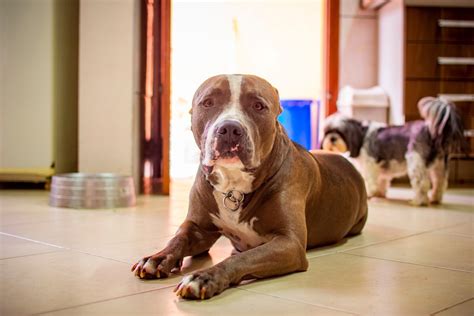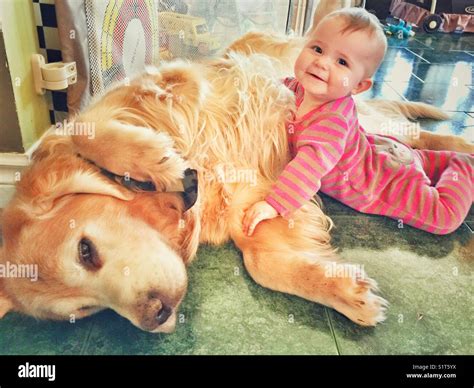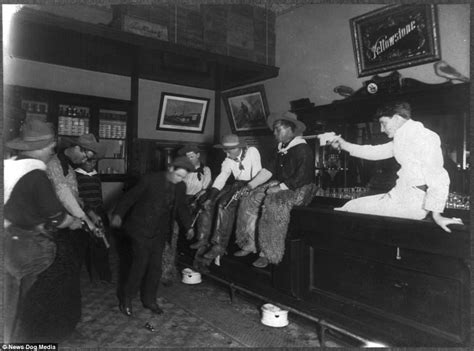
A viral video showcasing the remarkable patience of a pit bull named Blue with a Shih-Tzu puppy named Bowie has captivated audiences, highlighting the gentle nature often overlooked in the breed. The heartwarming interaction, shared widely across social media platforms, demonstrates Blue’s tolerance and care for the much smaller and energetic puppy, challenging common misconceptions about pit bulls.
The video, which has garnered significant attention online, features Bowie playfully nipping, jumping on, and generally pestering Blue, who responds with remarkable composure. Despite Bowie’s relentless antics, Blue remains calm, exhibiting gentle nudges and tolerant sighs instead of aggression. This display of patience has resonated with viewers, prompting discussions about breed stereotypes and the importance of individual dog temperaments.
Blue’s owner, identified as @roxyandblue on TikTok, regularly posts videos of the pair’s interactions, showcasing their unique bond and challenging negative perceptions of pit bulls. These videos serve as a reminder that a dog’s behavior is largely influenced by training, socialization, and individual personality, rather than breed alone.
The overwhelming response to the video underscores a growing desire to re-evaluate preconceived notions about certain dog breeds and to recognize the potential for positive interspecies relationships. Experts emphasize that responsible pet ownership, proper training, and early socialization are crucial factors in shaping a dog’s behavior, regardless of breed.
The viral video of Blue and Bowie continues to circulate, prompting widespread appreciation for the unexpected friendship and sparking conversations about responsible pet ownership and the importance of challenging breed stereotypes. The video serves as a powerful reminder that judging a dog based solely on its breed is unfair and often inaccurate, overshadowing the individual characteristics and potential for companionship that each animal possesses.
The Gentle Giant and the Tiny Terror: An In-Depth Look at Blue and Bowie’s Unlikely Friendship
The internet has once again found itself captivated by an unlikely pair, this time in the form of a patient pit bull and a mischievous Shih-Tzu puppy. Blue, the pit bull, has become an online sensation for his saintly tolerance of Bowie, the tiny Shih-Tzu, whose playful antics would test the patience of even the most placid canine. Their interactions, documented and shared on TikTok by their owner, have not only melted hearts but also sparked a broader conversation about breed stereotypes and the importance of responsible pet ownership.
The heart of the story lies in the stark contrast between the dogs. Pit bulls, often unfairly stigmatized as aggressive and dangerous, are muscular and powerful animals. Shih-Tzus, on the other hand, are small, fluffy companions known for their affectionate and playful nature. This juxtaposition makes Blue’s gentle demeanor all the more striking. The videos show Bowie relentlessly engaging Blue – nipping at his face, climbing on his back, and generally disrupting his peace. Yet, Blue’s response is consistently calm and tolerant. He may offer a gentle nudge or a soft sigh, but never displays aggression or irritation. This remarkable patience has touched a nerve with viewers, who are quick to praise Blue’s good nature and condemn the breed’s negative stereotypes.
“It’s amazing to see how patient Blue is with Bowie,” commented one user on TikTok. “He’s proving that pit bulls are not inherently dangerous, it’s all about how they are raised and treated.” This sentiment is echoed by countless others, who see Blue as an ambassador for his breed.
The owner, @roxyandblue, uses their platform to not only share adorable content but also to advocate for responsible pit bull ownership. They regularly emphasize the importance of training, socialization, and providing a loving and stable environment for these dogs. “Blue is proof that pit bulls can be wonderful family pets,” they stated in one video. “He’s gentle, loving, and incredibly loyal. It’s all about how you raise them.”
Challenging Breed Stereotypes: A Deeper Dive
The viral success of Blue and Bowie’s videos highlights a growing awareness of the unfair stereotypes that plague certain dog breeds, particularly pit bulls. These stereotypes often stem from sensationalized media reports and a lack of understanding about canine behavior. Organizations dedicated to animal welfare and breed advocacy have long fought against breed-specific legislation (BSL), which unfairly targets certain breeds based solely on appearance.
“BSL is discriminatory and ineffective,” argues the American Society for the Prevention of Cruelty to Animals (ASPCA). “It punishes responsible owners and does not address the root causes of dog bites. The focus should be on dangerous dog laws that hold owners accountable for their dogs’ behavior, regardless of breed.”
The ASPCA and other organizations advocate for comprehensive dangerous dog laws that focus on individual dog behavior and owner responsibility. These laws typically include provisions for:
- Mandatory leash laws: Requiring dogs to be leashed in public areas.
- Strict liability for dog bites: Holding owners legally responsible for injuries caused by their dogs.
- Increased penalties for repeat offenders: Imposing harsher penalties on owners whose dogs have a history of aggressive behavior.
- Education and outreach programs: Providing resources for dog owners on responsible pet ownership and dog bite prevention.
In addition to legislative efforts, education plays a crucial role in changing public perceptions of pit bulls. By sharing positive stories and highlighting the breed’s potential for companionship, advocates hope to dispel myths and promote responsible ownership. Blue and Bowie’s story is a powerful example of how a well-trained and well-socialized pit bull can be a loving and gentle member of a family.
The Science of Dog Behavior: Nature vs. Nurture
Understanding dog behavior is essential for responsible pet ownership and for challenging harmful stereotypes. While genetics play a role in a dog’s temperament, environmental factors, training, and socialization are equally important.
“A dog’s breed can give us some clues about its potential behavior,” explains Dr. Emily Weiss, Vice President of Research & Development at the ASPCA. “But it’s important to remember that every dog is an individual, and their behavior is shaped by a complex interplay of genes and environment.”
Studies have shown that early socialization is critical for developing well-adjusted dogs. Exposing puppies to a variety of people, places, and experiences during their first few months of life can help them develop confidence and reduce the likelihood of fear-based aggression. Training is also essential for establishing clear communication and boundaries. Positive reinforcement methods, such as rewarding desired behaviors with treats and praise, are generally considered the most effective and humane approach.
The relationship between Blue and Bowie highlights the importance of both socialization and training. Blue, having been properly socialized and trained, demonstrates remarkable self-control and patience in the face of Bowie’s persistent pestering. This is not to say that all pit bulls will exhibit the same level of tolerance, but it does illustrate the potential for positive behavior when these factors are in place.
The Owner’s Perspective: Responsible Pet Ownership in Action
@roxyandblue’s commitment to responsible pet ownership is evident in their approach to raising both Blue and Bowie. They prioritize training, socialization, and providing a loving and stimulating environment for their dogs. Their videos often showcase Blue participating in obedience training, interacting with other dogs and people, and engaging in playful activities.
“We believe in positive reinforcement training,” @roxyandblue explained in a recent interview. “We never use punishment or harsh methods. We want Blue to associate training with positive experiences.”
They also emphasize the importance of understanding a dog’s body language and recognizing signs of stress or discomfort. This allows them to intervene before a situation escalates and to ensure that both dogs feel safe and comfortable.
“We’re always watching their interactions closely,” they said. “If we see Blue showing any signs of being overwhelmed, we’ll separate them to give him a break. It’s important to respect their boundaries and to create a safe and positive environment for both of them.”
Their dedication to responsible pet ownership has not only fostered a strong bond between Blue and Bowie but has also inspired countless others to re-evaluate their perceptions of pit bulls and to embrace responsible dog ownership practices.
Beyond the Cuteness: The Broader Implications
The viral success of Blue and Bowie’s story transcends mere entertainment. It serves as a powerful reminder of the importance of challenging stereotypes, promoting responsible pet ownership, and recognizing the individual potential of every animal. Their unlikely friendship has sparked conversations about breed discrimination, the role of genetics and environment in shaping behavior, and the power of positive reinforcement training.
By showcasing the gentle nature of a pit bull and the adorable antics of a Shih-Tzu puppy, @roxyandblue have created a platform for education and advocacy. Their videos have inspired countless viewers to reconsider their preconceived notions about dog breeds and to embrace the principles of responsible pet ownership.
As the story of Blue and Bowie continues to circulate, it is hoped that it will continue to promote understanding, compassion, and a more nuanced view of dogs and their behavior. The world needs more stories that highlight the potential for kindness and connection, regardless of breed, size, or background. The impact of this adorable duo is far-reaching and serves as a great example of what the impact of positive media can have.
Frequently Asked Questions (FAQ)
1. Is it safe to leave a pit bull unsupervised with a small puppy like a Shih-Tzu?
No, it’s generally not recommended to leave any dog, regardless of breed, unsupervised with a small puppy or another potentially vulnerable animal. Even well-trained and gentle dogs can unintentionally harm a puppy due to size differences and playful energy. Supervision allows for intervention if the play becomes too rough or if one animal shows signs of stress. Responsible pet ownership includes always being present and attentive during interactions between animals. While Blue shows immense patience, every dog has its limits, and unforeseen circumstances can arise.
2. Are pit bulls inherently dangerous dogs?
No, pit bulls are not inherently dangerous. Their reputation for aggression often stems from breed-specific legislation, sensationalized media coverage, and irresponsible breeding or training practices. Like any dog, a pit bull’s behavior is primarily influenced by genetics, socialization, training, and the environment in which it is raised. Properly socialized and trained pit bulls can be loving, gentle, and loyal companions.
3. What is breed-specific legislation (BSL), and why is it controversial?
Breed-specific legislation (BSL) is a type of law that prohibits or restricts the ownership of specific dog breeds, typically those perceived as dangerous, such as pit bulls, Rottweilers, and Doberman Pinschers. BSL is controversial because it is considered discriminatory and ineffective. Opponents argue that it unfairly punishes responsible owners, does not address the root causes of dog bites, and is based on unreliable breed identification methods. Instead, they advocate for comprehensive dangerous dog laws that focus on individual dog behavior and owner responsibility.
4. What are the key elements of responsible pit bull ownership?
Responsible pit bull ownership includes:
- Early socialization: Exposing the dog to a variety of people, places, and experiences from a young age.
- Consistent training: Using positive reinforcement methods to teach obedience and establish clear boundaries.
- Secure containment: Ensuring the dog is safely contained within a fenced yard or leashed during walks.
- Responsible breeding: If breeding, prioritizing temperament and health over appearance.
- Advocacy: Educating others about the breed and challenging negative stereotypes.
- Understanding the breed: Learning the breed’s specific needs and tendencies.
5. How can I help challenge negative stereotypes about pit bulls?
You can help challenge negative stereotypes about pit bulls by:
- Educating yourself: Learning about the breed and its history.
- Sharing positive stories: Highlighting examples of well-behaved and loving pit bulls.
- Supporting breed-specific rescue organizations: Volunteering or donating to groups that advocate for pit bulls.
- Challenging misinformation: Correcting inaccurate or biased information about the breed.
- Being a responsible owner: If you own a pit bull, demonstrate responsible ownership through proper training, socialization, and care.
- Advocating for fair legislation: Supporting laws that focus on individual dog behavior rather than breed.
- Encouraging open dialogue: Creating opportunities for respectful conversations about pit bulls and breed stereotypes.
- Share accurate information: Help spread facts and data that dispel myths, and direct people to reliable resources.
Expanded Analysis and Context
The story of Blue and Bowie is not just a heartwarming tale; it’s a microcosm of broader societal debates surrounding animal welfare, breed discrimination, and responsible pet ownership. The viral video has tapped into a deep-seated desire to see beyond superficial labels and appreciate the individual qualities of animals. It has also reignited discussions about the role of media in shaping public perceptions and the importance of evidence-based approaches to animal control.
The controversy surrounding pit bulls is complex and multifaceted, with roots in history, economics, and social anxieties. In the past, pit bulls were often bred for fighting, a practice that has contributed to their aggressive reputation. However, modern-day pit bulls are primarily bred as companion animals, and their temperament is largely determined by their upbringing.
The economic factors also play a significant role. In some communities, pit bulls are associated with gang activity and illegal dog fighting, further fueling negative stereotypes. These associations are often perpetuated by media portrayals, which tend to focus on sensationalized stories of dog attacks rather than highlighting the positive contributions of pit bulls as family pets.
The anxieties surrounding pit bulls also reflect broader societal concerns about safety and social order. In a world increasingly characterized by uncertainty and fear, the image of a powerful and potentially dangerous dog can be particularly unsettling. This fear is often amplified by a lack of understanding about canine behavior and a tendency to project human emotions and motivations onto animals.
In contrast, the story of Blue and Bowie offers a counter-narrative that challenges these negative stereotypes and promotes a more nuanced understanding of dogs. By showcasing the gentle nature of a pit bull and the playful antics of a Shih-Tzu puppy, the video invites viewers to reconsider their preconceived notions and appreciate the potential for positive interspecies relationships.
The success of the video also underscores the power of social media as a platform for education and advocacy. By sharing their experiences and insights, @roxyandblue have created a community of like-minded individuals who are committed to promoting responsible pet ownership and challenging breed discrimination.
The story of Blue and Bowie is a reminder that every dog is an individual, and that judging a dog based solely on its breed is unfair and inaccurate. It is a call to action for responsible pet ownership, compassionate treatment of animals, and a more nuanced understanding of the complex relationship between humans and their canine companions. The world needs more people to advocate for the loving nature of animals and challenge the stigma and stereotypes that create unsafe environments for both the animals and humans involved.









